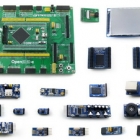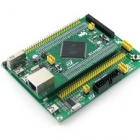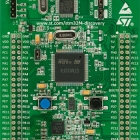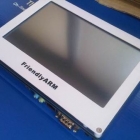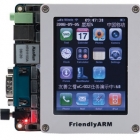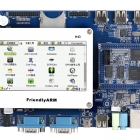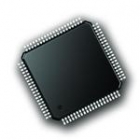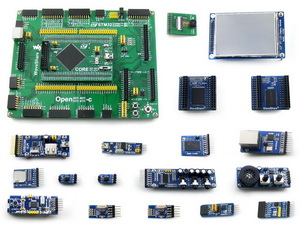
 Ảnh sản phẩm thuộc về PNLAB
Ảnh sản phẩm thuộc về PNLAB
Thông tin chi tiết sản phẩm |
|||
Tên sản phẩm: |
Kít arm Cortex M4 STM32F407IGT6 |
||
Giá: |
3.600.000 |
||
Tình trạng: |
Liên hệ |
||
Xuất xứ: |
China |
||
Hãng sản xuất: |
Waveshare |
||
Mã sản phẩm: |
Open407I-C Package B |
||
Overview
Open407I-C is an STM32 development board designed for the STM32F407IGT6 microcontroller, consists of the mother board and the MCU core board Core407I.
The Open407I-C supports further expansion with various optional accessory boards for specific application. The modular and open design makes it the ideal for starting application development with STM32F4 series microcontrollers.
What's on the mother board
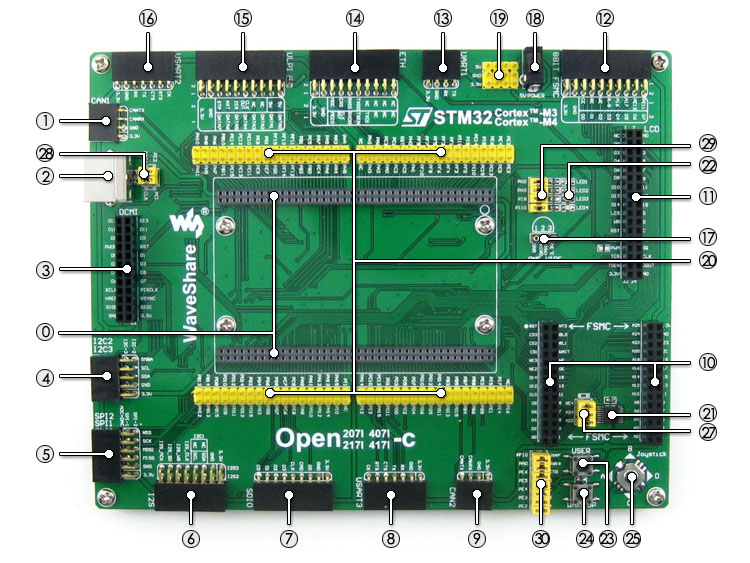
- MCU core board connector: for easily connecting the Core407I
- CAN1 interface: communicates with accessory boards which feature the CAN device conveniently
- PS/2 interface: easily connects to PS/2 keyboard and/or mouse
- DCMI interface: for connecting camera module
- I2C2 / I2C3 interface: easily connects to I2C peripherals such as I/O expander (PCF8574), EEPROM (AT24Cxx), etc.
-
SPI1 / SPI2 interface
- easily connects to SPI peripherals such as DataFlash (AT45DBxx), SD card, MP3 module, etc.
- SPI1 features AD/DA alternative function, supports connecting AD/DA module as well
- I2S2 / I2S3 / I2C1: for connecting I2S peripherals, such as Audio module
- SDIO interface: for connecting Micro SD module, features much faster access speed rather than SPI
- USART3 interface: easily connects to RS232, RS485, USB TO 232, etc.
- CAN2 interface: communicates with accessory boards which feature the CAN device conveniently
- 16-bit FSMC interface: easily connects to peripherals such as NorFlash, SRAM, etc.
- 16-bit FSMC + SPI interface: for connecting touch screen LCD
- 8-bit FSMC interface: easily connects to peripherals such as NandFlash, Ethernet, etc.
- UART1 interface: easily connects to RS232, RS485, USB TO 232, etc.
- Ethernet interface: easily connects the MCU to ethernet network by using an additional ethernet module
- ULPI interface: for connecting high-speed USB peripheral (the STM32F407I integrates USB HS controller without any PHY device)
- USART2 interface: easily connects to RS232, RS485, USB TO 232, etc.
- ONE-WIRE interface: easily connects to ONE-WIRE devices (TO-92 package), such as temperature sensor (DS18B20), electronic registration number (DS2401), etc.
- 5V DC jack
- 5V/3.3 V power input/output: usually used as power output, also common-grounding with other user board
- MCU pins connector: all the I/O ports are accessible on expansion connectors for further expansion
- 74LVC139: used for FSMC expansion, make it possible to connect multi devices through FSMC at the same time, such as LCD and NAND FLASH
- LEDs: convenient for indicating I/O status and/or program running state
- User key: convenient for I/O input and/or interact with running code
- Wake-Up button: wake up the STM32 MCU from sleep mode, also used as regular user key
- Joystick: five positions
- Crystal empty slot (on bottom side): for soldering 50M active crystal oscillator, which'll provide clock to DCMI
- 74LVC139 selection jumper: for FSMC chip select
- PS/2 jumper
- LEDs jumper
- User key / joystick jumper
For jumpers 27-30:
- short the jumper to connect to I/Os used in example code
- open the jumper to connect to other custom pins via jumper wires
What's on the Core407I
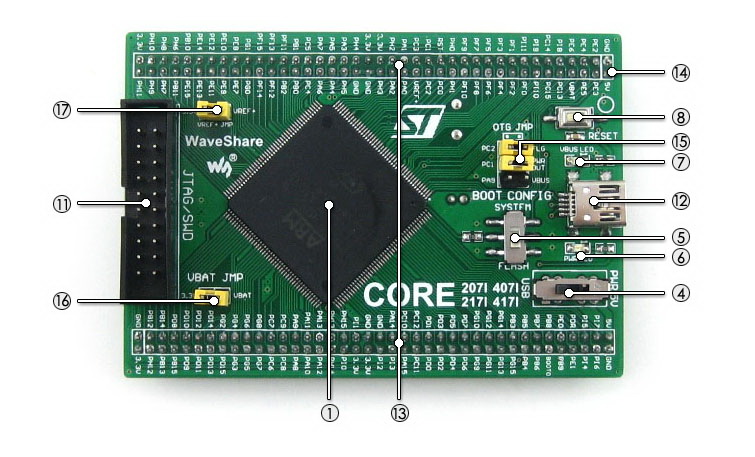
-
STM32F407IGT6: the high performance STM32 MCU which features:
- Core: Cortex-M4 32-bit RISC
- Feature: a full set of single-cycle DSP instructions
- Operating Frequency: 168MHz, 210 DMIPS/1.25 DMIPS/MHz
- Operating Voltage: 1.8V-3.6V
- Package: LQFP176
- Memories: 1024kB Flash, 192+4kB SRAM
-
MCU communication Interfaces:
- 3 x SPI, 4 x USART, 2 x UART, 2 x I2S, 3 x I2C
- 1 x FSMC, 1 x SDIO, 2 x CAN
- 1 x USB 2.0 high-speed/full-speed device/host/OTG controller with dedicated DMA, ULPI and on-chip full-speed PHY
- 1 x 10/100 Ethernet MAC
- 1 x 8 to 14-bit parallel camera interface
- AD & DA converters: 3 x AD (12-bit, 1μs, shares 24 channels); 2 x DA (12-bit)
- Debugging/Programming: supports JTAG/SWD (serial wire debug) interfaces, supports IAP
- AMS1117-3.3 (on bottom side), 3.3V voltage regulator
- MIC2075 (on bottom side), onboard USB power management device
- Power supply switch, powered from 5Vin or USB connection
- Boot mode switch, for configuring BOOT0 pin
- Power indicator
- VBUS LED
- Reset button
- 8M crystal oscillator (on bottom side)
- 32.768K crystal (on bottom side), for internal RTC with calibration
- JTAG/SWD interface: for debugging/programming
-
USB interface
- as DEVICE, used for establishing USB communication between PC and the STM32 development board
- as HOST, connecting to USB devices such as USB flash drive through a USB OTG cable
- MCU pins expander, VCC, GND and all the I/O ports are accessible on expansion connectors for further expansion
- 5Vin pinheader, 5V power supply is required when using USB HOST/OTG
-
USB HOST/OTG jumper
- short the jumper when using USB HOST/OTG
- open the jumper to disconnect from I/O port
-
VBAT selection jumper
- short the jumper to use system power supply
- open the jumper to connect the VBAT to external power, such as battery
-
VREF selection jumper
- short the jumper to connect VREF+ to VCC
- open the jumper to connect VREF+ to other custom pin via jumper wire
Accessory Boards Package
- 3.2inch 320x240 Touch LCD (A) x 1
- USB3300 USB HS Board x 1
- DP83848 Ethernet Board x 1
- NandFlash Board (A) x 1
- NorFlash Board (A) x 1
- IS62WV12816BLL SRAM Board x 1
- OV9655 Camera Board x 1
- Micro SD Storage Board x 1
- AT45DBXX DataFlash Board x 1
- FM24CLXX FRAM Board x 1
- UDA1380 Board x 1
- VS1003B MP3 Board x 1
- Analog Test Board x 1
- SN65HVD230 CAN Board 2pcs x 1
- NRF24L01 RF Board (B) 2pcs x 1
- Ethernet Cable x 1
 www.pnlabvn.com
www.pnlabvn.com



